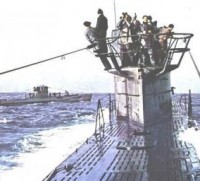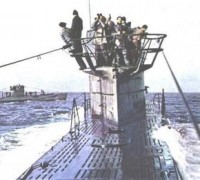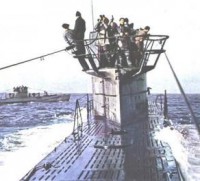U BOATS SUNK IN SOUTH ATLANTIC - U 128 / U 1062
9)U-161 PICTURES
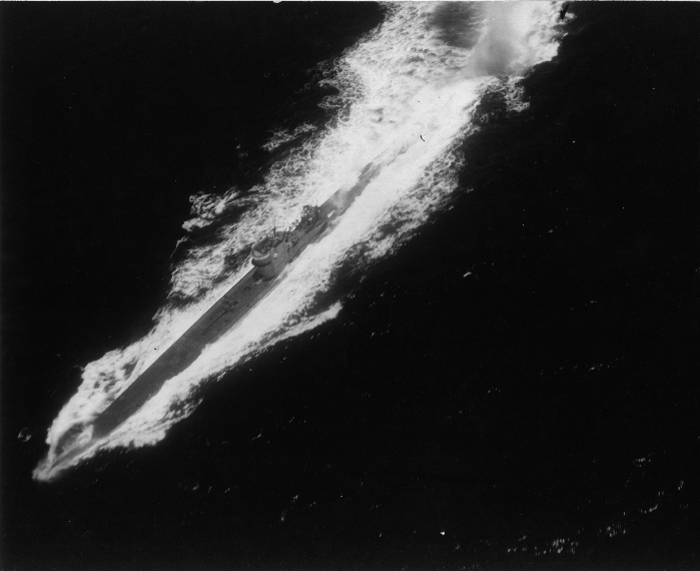
Taken from the tunnel hatch just after the second attack - spray from depth bomb is subsiding in the wake
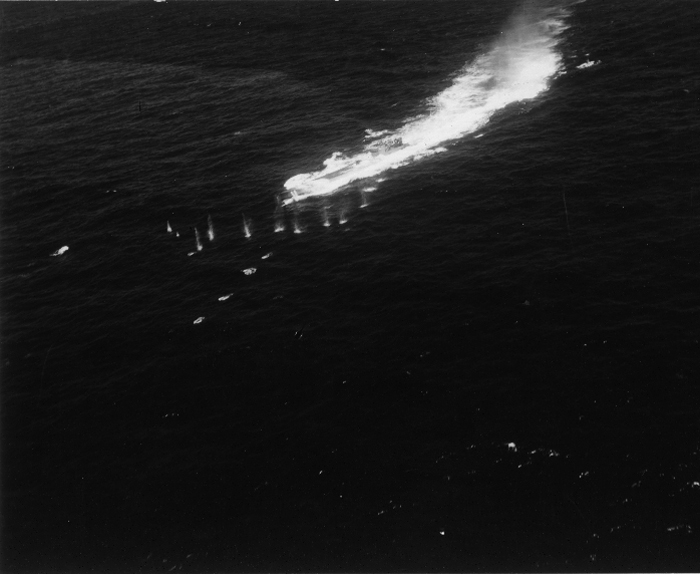
Taken from the tunnel hatch after the second attack
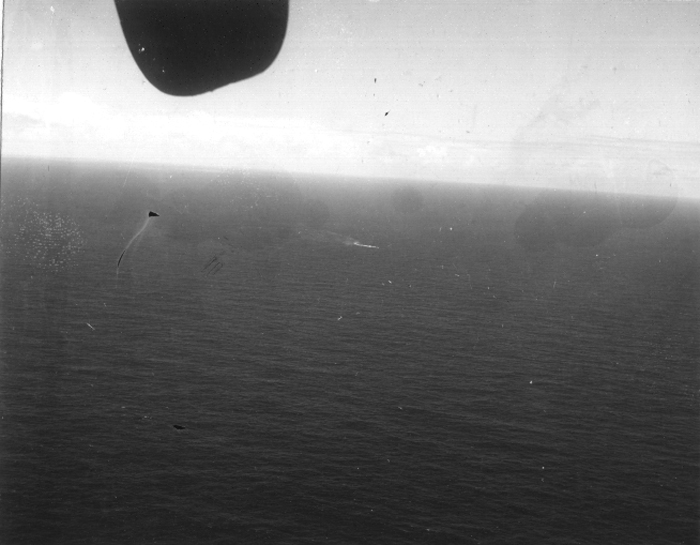
Taken from the waist hatch just before the boat submerged
.jpg)
A large oil slick is seen on the south Atlantic surface where U - 161 was attacked and sunk. All crewmembers perished.
.jpg)
Picture of Capt. Albrecht Achilles. His men regarded him in high esteem for his leadership.
.jpg)
TRANSCRIPTION FROM ABOVE
Narrative:
74 P2 was flying a barrier sweep in vicinity of DF obtained the previous evening. At 10:50, the Radar operator BEALER, reported a ship Bearing 8º to Port, range 58 miles.Plane was on course of 091º T, speed 110 Kt, altitude 4500’. Closing range, the wake of a submarine was first sighted visually by the 2nd pilot about 18 miles dead ahead, his course at right angles to ours headed to our right, Battle Stations were manned, as we immediately increased speed and commenced a shallow turn to left to take advantage of the sun, as well as to get in position for a stern attack. No clouds were in the area. I believe we were sighted at this time.
About 7 to 8 miles distant, the sub opened fire while in a left turn, apparently attempting to bring his after guns to bear on us. (This was puzzling as in the past the subs usually turned to presente a beam target.) The shells were exploding short, leaving White puffs in a line across our course. As we came within range, approximately 3 or 4 miles distant, some large brown puffs could be seen. The gunners were very accurate and two explosions made the air very turbulent. The bow gunner opened fire at about 3000 yds. The fire was falling short, getting on the target as the range closed. Lieutenant (Jg) FERGERSON, co-pilot, dropped a string of 6 Mk 44 Torpex-filled D/C’S as I passed over, or just forward of, the conning tower from sub’s port quarter at na angle of about 20º from stern, between 75 and 100’ altitude, airspeed 185 knots.
I made a sharp left turn, Sub appeared to be just emerging from bomb slick, most of which seemed to be on starboard side of sub’s track. The sub started turning right. When the plane was broadside the sub again opened fire, the shells exploding off our port side. After reaching 800’ altitude, I gave orders to standby and commenced second attack. During this run, the fire was heavier and more accurate. We were just hit forward of galley door by a shell that exploded just as it struck. Ensign BRETT, was emerging from bomb compartment after having reset the intervalometer, he was severely wounded by shrapnel and aluminum from this shell, as was Radioman BEALER. At this time I did not know that BEALER was hit nor where or how badly the plane was damaged.
Lt (Jg) FERGERSON dropped the remaining two bombs and the plane passed directly over the target from stern to bow at about 165 knots at 160’ altitude. I immediately gained altitude believing there was a possibility that my engines or fuel tanks were damaged. Ensign LARSON, navigator, carried Ensign BRETT back aft to a bunk where HANSEN, administered first aid. BEALER was sending 35,0 ‘s. the Flight Engineer reported that we were hit in many places and that our inverter line was shot away putting our electrical instruments out of commission. Just before reachin 2500’ altitude at which I levelled off, I glanced back and noticedthat BEALER was wounded in his right leg.
He was still at this station helping Ensign LARSON with the amplyfing report and have never reported being hit. After checking Ensign BRETT’s injuries and the damage to plane I realized that he needed medical attention quickly. Although we were out of range at this time, the sub kept out a continuous fire. It manuevered erratically after the 2nd attack the speed was noticeably reduced. It squared away on straight course of 140º T and submerged at 11:22P. I flew over the swirl and dropped D/C Marker, and then departed for base.
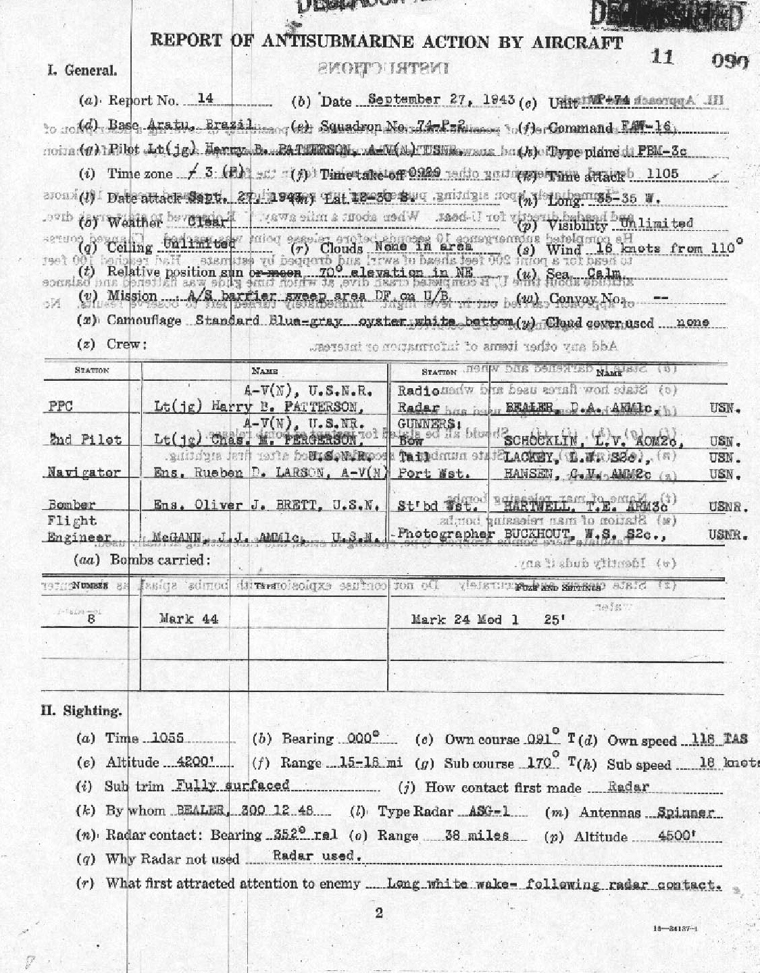
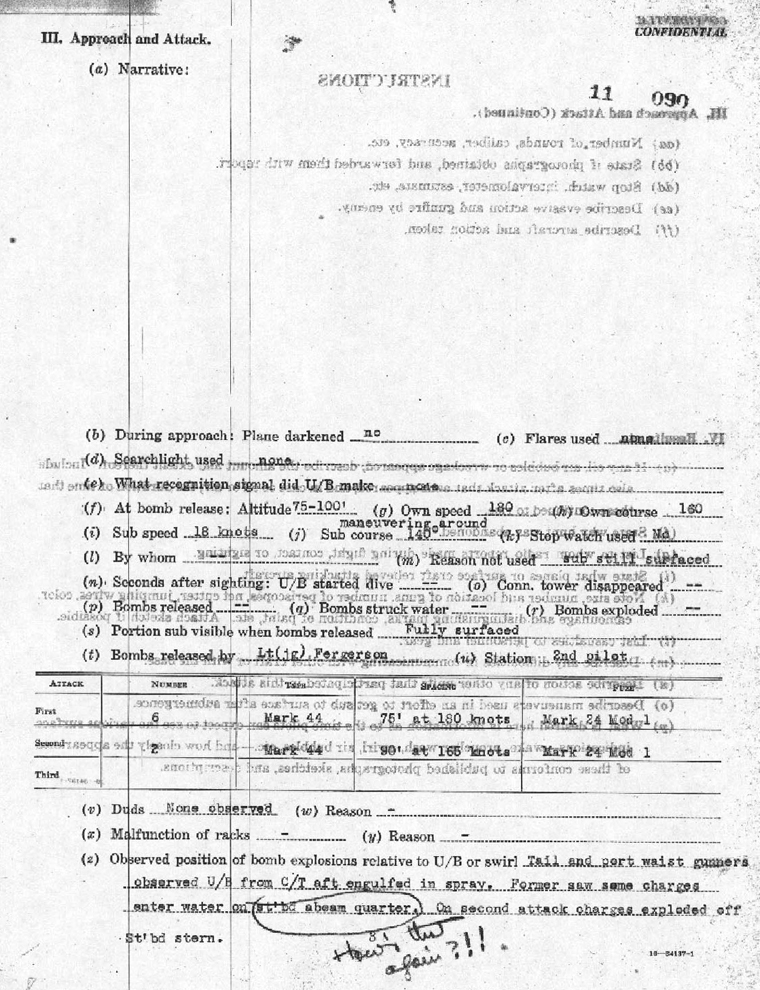
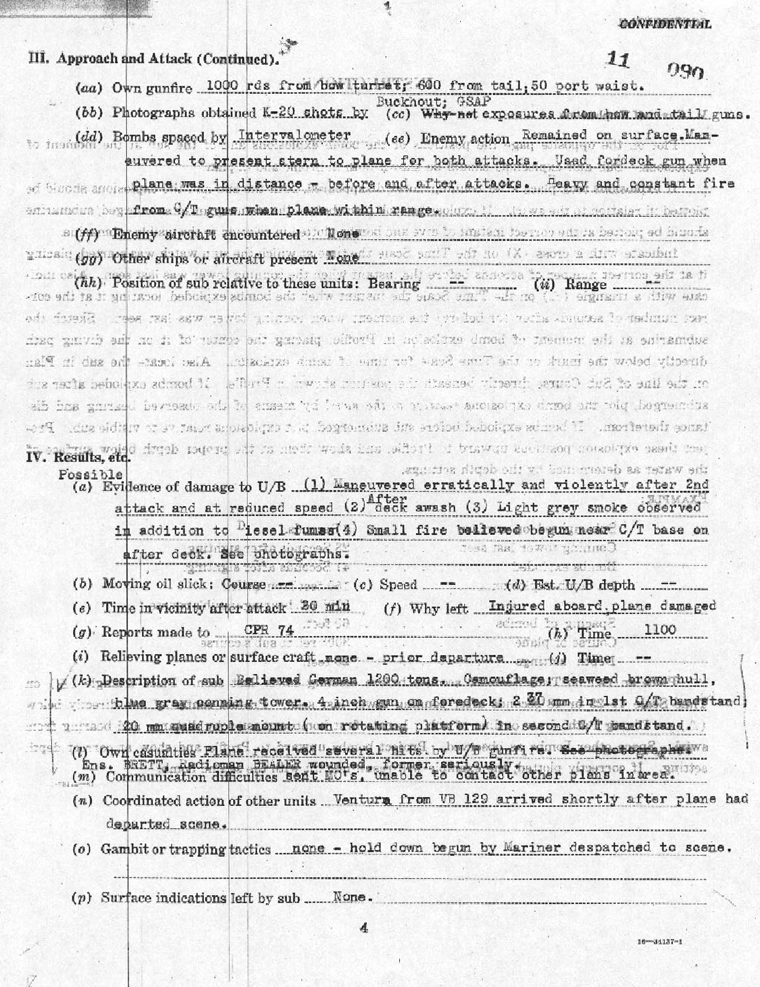
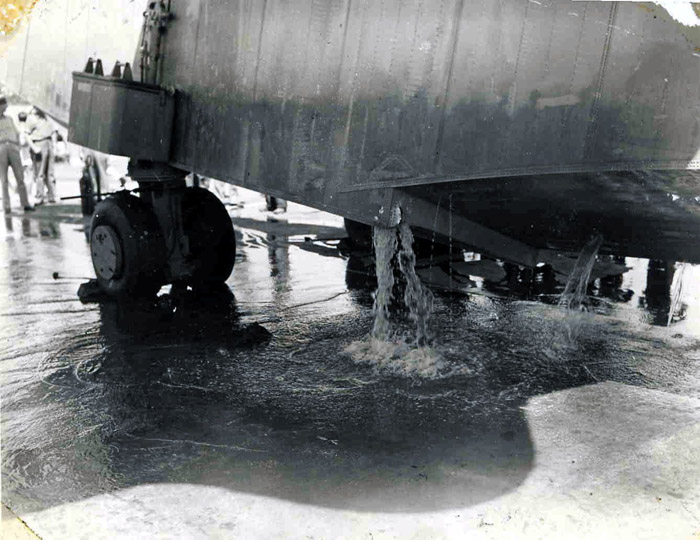
Aircraft 74-P-2 is quickly hauled up the launching ramp water leaking from holes caused by U-161's AA fire
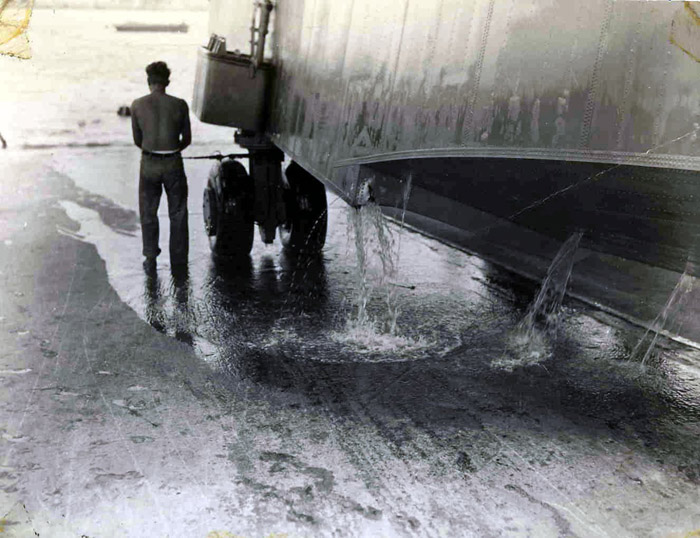
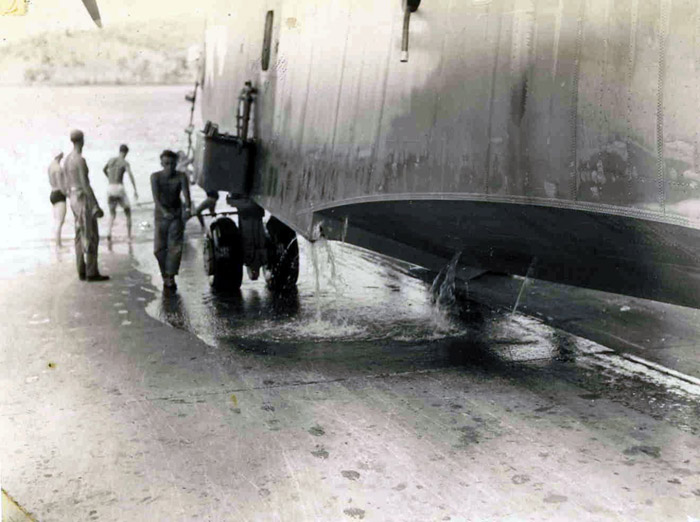
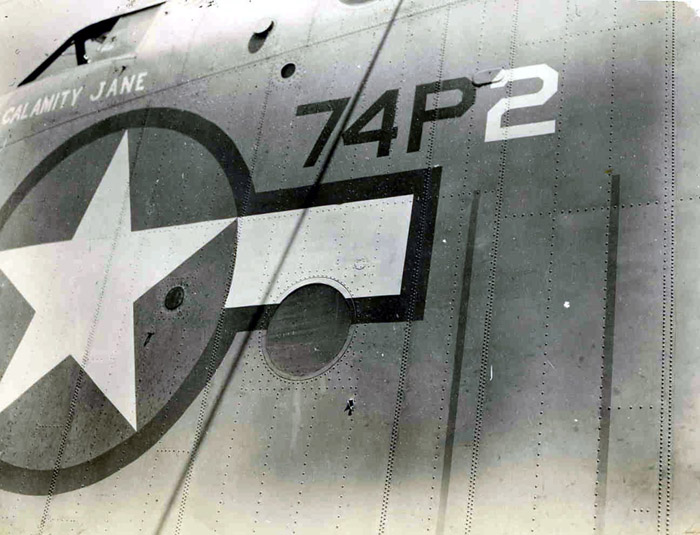
Exit hole on port side made by shrapnel from explosive shell that hit just forward of galley door
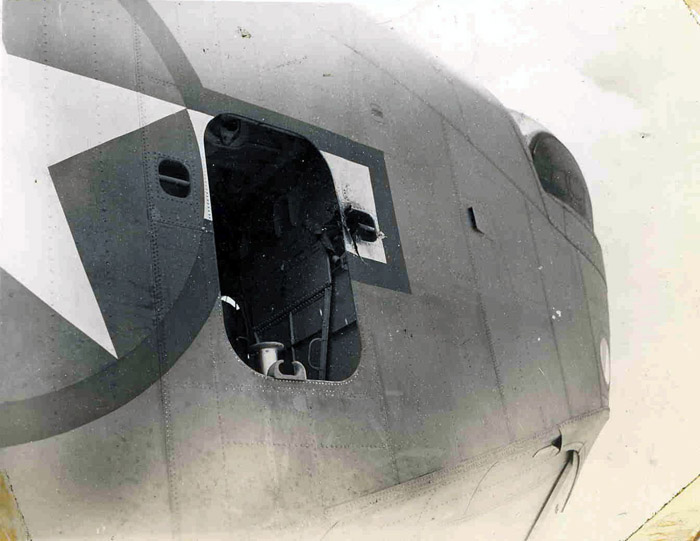
Damage from exploding 37mm shell just forward of the galley door - this hit caused the injuries to the Bombardier, ENS Oliver Bret, and Radio/Radar Operator ARM1/c Dean Bealer
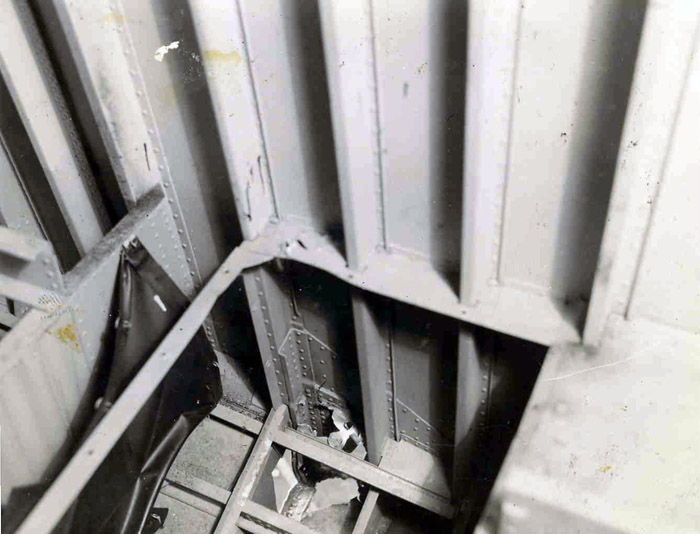
Interior view of damage to the portside hull (looking down and aft)
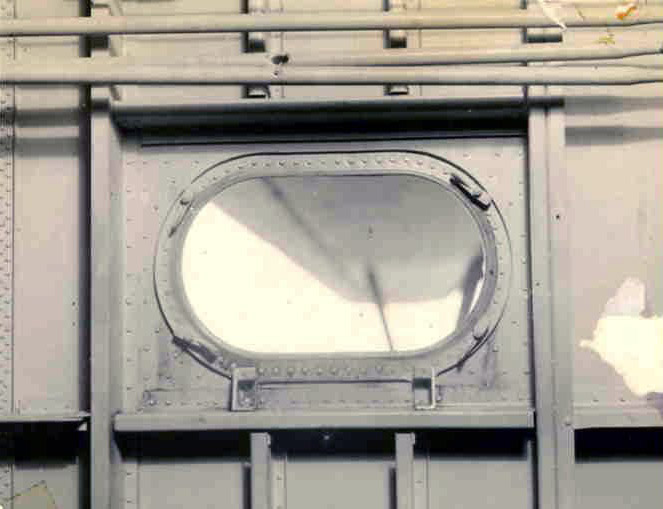
Damage to electrical conduit above port from shrapnel - port wing is visible through port.
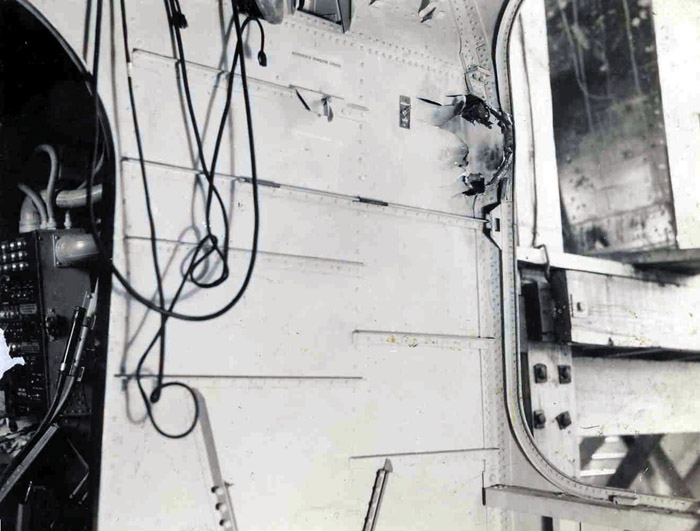
Interior view of damage just forward of galley door
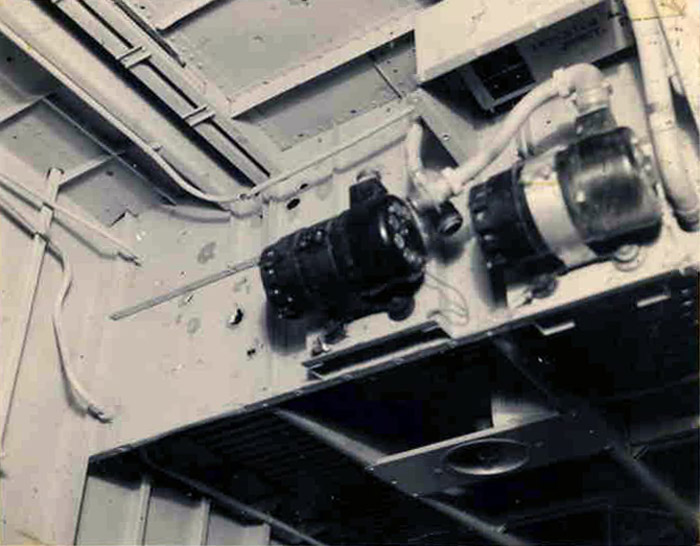
Shrapnel damage in the vicinity of the rotary inverters (looking forward and up just aft the aft of the wing) which caused loss of the electric instruments
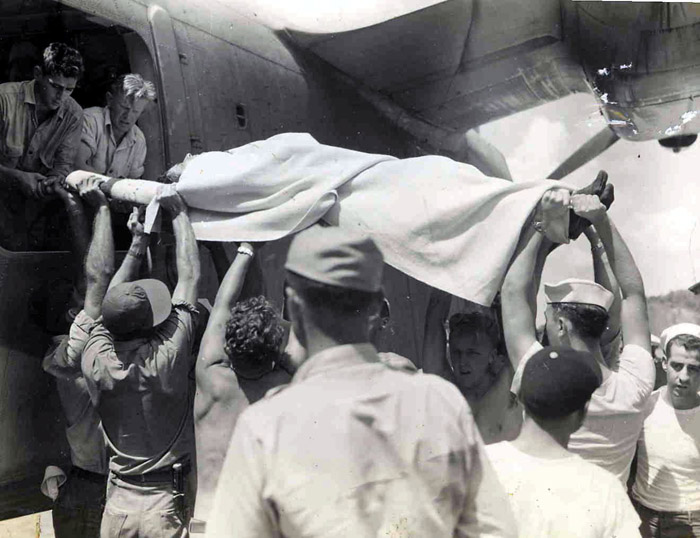
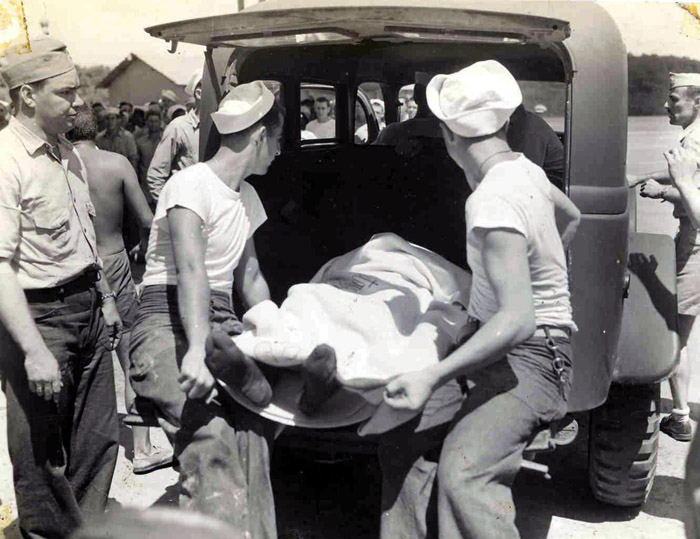
Ensign Brett is loaded into the ambulance
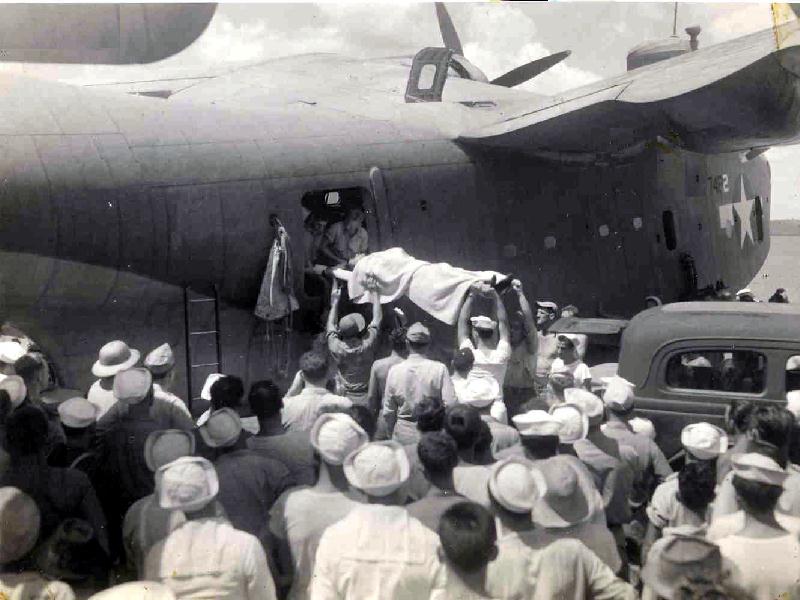
Rare picture from the arrival of VP 74 P2 PBM at Aratu Seaplane base. Crewmember is carefully removed from the aircraft.
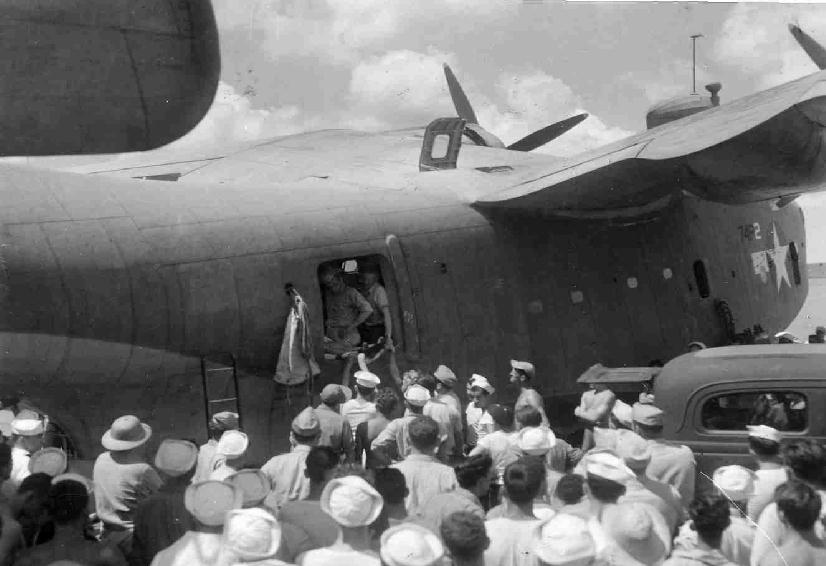
Another detail of the removal of Ensign Brett or Radioman Bealer from the PBM as soon as it arrived at Aratu Sepalane base,
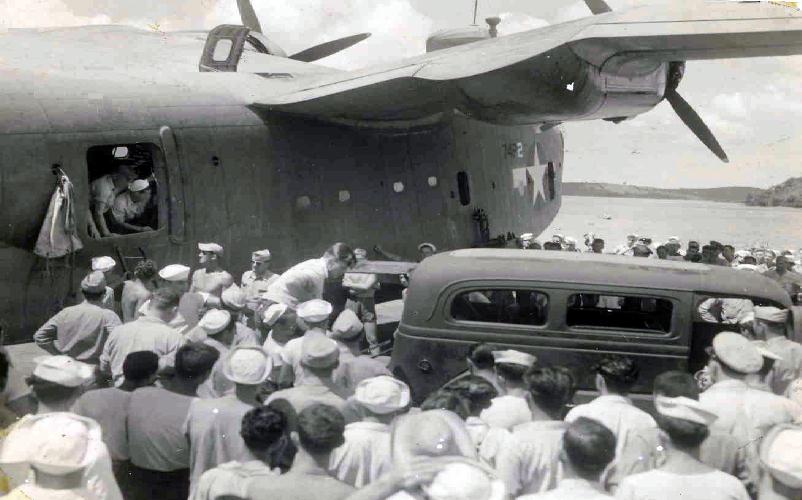
Injured crewmember is assisted by their comrades. Later both men recovered from their wounds.
Pictures by Cap. Jerry Mason USN Ret. http://www.uboatarchive.net/
